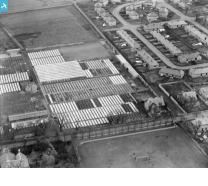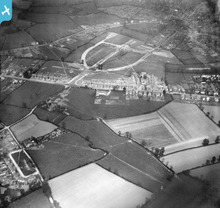Grwpiau

Agriculture
About the group Themed images of agricultural activity
Wedi ei greu 6 December 2012

AlMu |
||
|
Agricultural land and housing always compete for space with one another, and use space quite differently, as this image showing farming land after housing clearance shows dramatically.
|

AlMu |
|
|
Agricultural needs fertile land if it is to be successful, and the alluvial land bordering major rivers is a major source of this. In this image, the broad swathe of the River Tay in the background is framed by the rich farmland and marked out fields of Burnfoot Farm in the middle ground.
|

AlMu |
|
|
This farm with its many chicken sheds is clearly rearing chickens on a large scale. Battery farming methods were introduced in the 1930s. It is the most common form of egg production today although some farms are returning to 'free range' methods.
|

MM |
|
|
This image shows a traditional farm with its farmhouse and barns. The cows are coming in from the surrounding fields for milking. Note the granary which is raised up on saddle stones to keep the grain free from damp and rats. More images of farms and farming can be found on the Heritage Explorer website
http://www.heritage-explorer.co.uk/web/he/search.aspx?crit=farming&start=1&rt=0 |

MM |
|
|
This pig farm is an example of more intensive farming methods. The pigs are housed in buildings rather than outdoors.
|

MM |
|
|
Farming has left many marks on the landscape. These fields show evidence of how farming was done in the middle ages when the Ridge and Furrow or Strip system was common. Crops were sown in the furrows or dips and the ridges or banks marked the boundaries of the individual strips.
|

MM |
|
|
This image shows how farming land was built over as Wolverhampton expanded in the 1920s and 1930s. The Warstones estate was completed in the 1940s. New estates were built to house people after older houses in town and city centres were demolished under slum clearance programmes.
|

MM |
|
|
A traditional farm with a large farmhouse and range of barns. The haycart would have been pulled by horses although tractors were beginning to replace horses by this time.
|

MM |
|
|
http://en.wikipedia.org/wiki/Market_garden
|

AlMu |










see image record